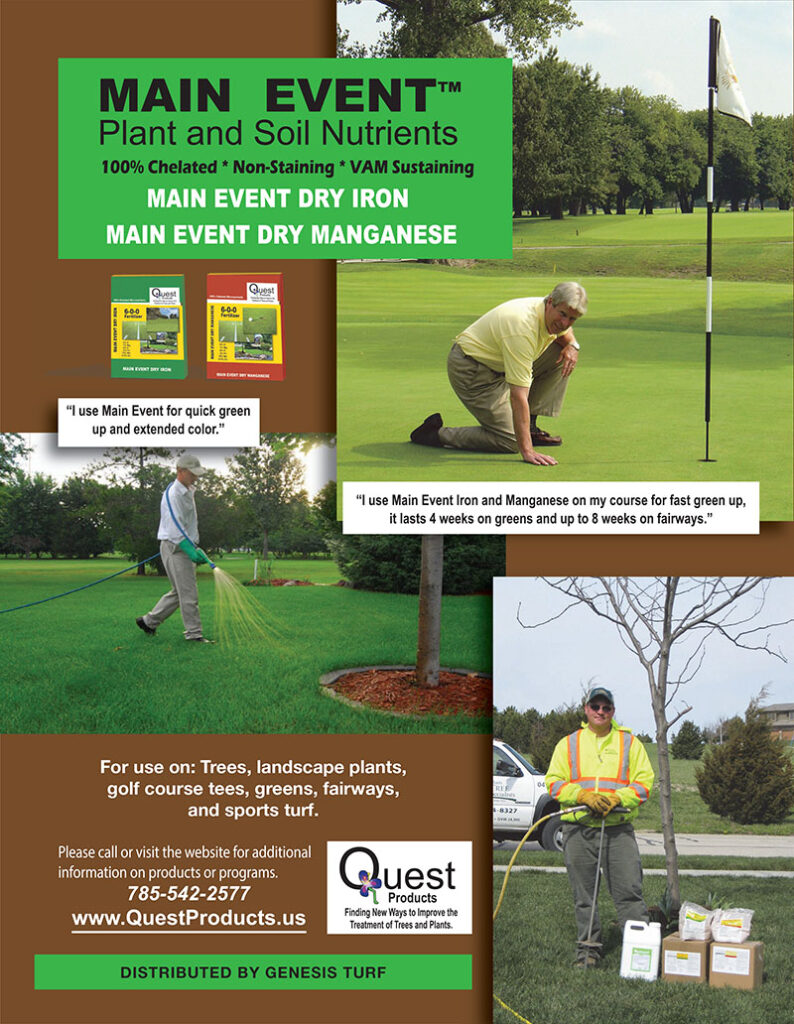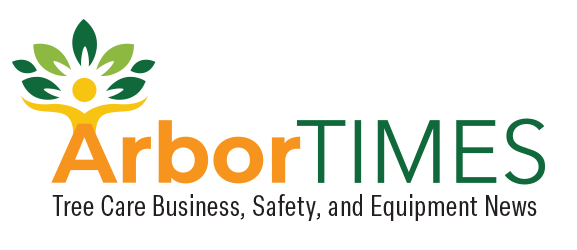In Pursuit of Responsible Spraying
Sustainable tree care practices require an integrated pest management program
A holistic approach and continuing education are crucial to adopting more precise and targeted solutions
Este es nuestro intento de convertir las historias en audio español usando Inteligencia Artificial. Aún así le recomendamos que reconfirme ciertas palabras clave y temas. ArborTIMES no garantiza ni se responsabiliza de la conversión del inglés al español de los relatos.

In the realm of tree care, addressing invasive or destructive pests and diseases is a big part of what tree care professionals do. However, the chemicals used to treat affected trees should be used with care.
That’s why responsible spraying stands as a cornerstone practice for arborists and tree care professionals. It’s not just about pest management — it’s about preserving the health of trees, safeguarding the environment, and ensuring the safety of communities.
Responsible spraying isn’t merely a preference; it’s an imperative. The indiscriminate use of pesticides and chemicals can lead to detrimental consequences for ecosystems, wildlife, and even human health. Arborists play a pivotal role in mitigating these risks by adopting practices that prioritize targeted treatments, minimal environmental impact, and maximum efficacy.
Here’s a look at how the practice has evolved and what you need to know about incorporating a responsible integrated pest management plan (IPM) into your tree care practice.
Why it’s important
Unfortunately, failure to spray responsibly can result in many health and environmental issues, particularly the contamination of soil and water. When spraying is done indiscriminately or improperly, pesticides can make their way into the surrounding soil and even into waterways. This can eventually impact the health of other plant life, wildlife, and even human safety.
Other consequences of irresponsible spraying include collateral damage to non-target organisms like beneficial insects and even legal ramifications in certain situations and in some regions.
Mark Ware, an arborologist with Rainbow Ecoscience, mentioned another timely and critical consequence of irresponsible spraying: bans on potentially useful products. When a pesticide product is frequently used improperly and leads to detrimental consequences, this could lead to regulatory restrictions on the product itself.
“These products, when used properly, actually have a much less significant impact on the environment,” he explained. “They can actually be and usually are the preferred products to use in a lot of situations when we’re dealing with especially invasive pests.”
However, once banned or restricted, these products cannot be used for their intended purposes, leaving arborists without the best possible tools to control invasive pest species. And, as Ware also pointed out, an arborist’s ultimate responsibility is to control these infestations, since many of the pest issues we see are often due to human travel and exports across the globe.

History of tree spraying
Tree spraying and pest management in the tree care industry traces back to rudimentary practices, such as applying general mixes of chemicals across entire landscapes.
Thomas Duffy, president and owner of Spray Tree and Chemical Containers Inc., recalls how different pest control practices were decades ago and how far the industry has come. He explained that pest management used to consist of three sprays per year: first leaf, second leaf, and dormant spray.
“Back in the 50s and 60s, it used to be general sprays,” he said. “They would come in and spray all the trees on the property, and now it’s completely different.”
Today, Duffy says those types of spray schedules are gone and have been replaced by practices that are much more insect specific. That’s because, over time, advancements in research and technology have revolutionized spraying practices, leading to more precise and targeted solutions.
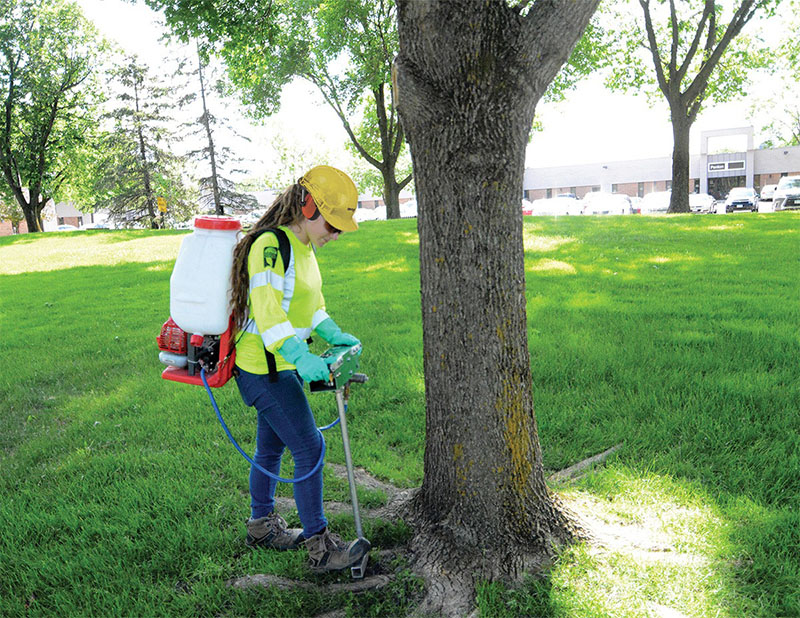
Modern techniques, like tree and soil injections, allow arborists to deliver specific treatments tailored to individual trees, minimizing environmental impact and maximizing effectiveness. This progression underscores the importance of adapting practices that align with ecological sustainability and evolving industry standards.
The importance of IPM
IPM represents a paradigm shift in pest control strategies, emphasizing holistic approaches that utilize multiple techniques for long-term pest suppression. It includes several techniques, such as biological control, habitat manipulation, modifying cultural practices, and favoring resistant varieties. Pesticides tend to be used only as a last resort.
“IPM is still a relatively new concept. It wasn’t developed all that long ago,” Ware explained. “It’s a very important part of the plant healthcare program and integrates other management techniques other than just spraying or chemical management techniques.”
According to Ware, one IPM practice is to examine the site for signs of beneficial insects that may already be preying on the pests you’re there to manage. In this type of situation, Ware says the best thing an arborist can do is take a step back and consider other means of pest management.
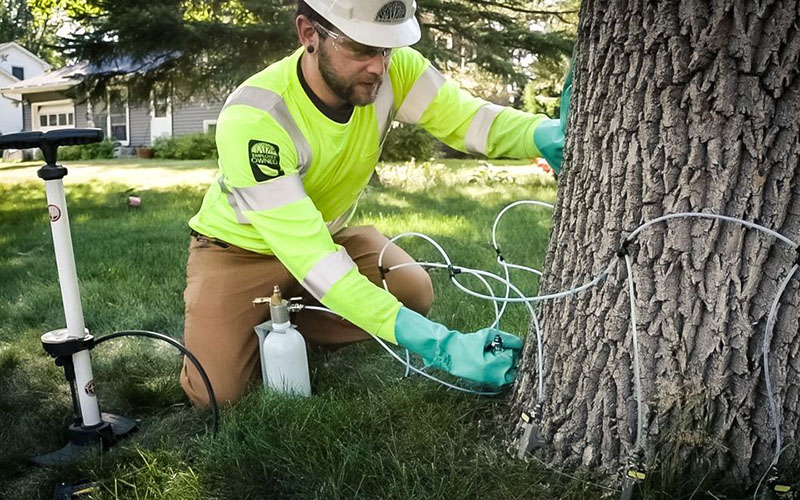
“Things like improving the health of the tree or using less impactful products at different times of the year,” he says.
IPM practices prioritize prevention, monitoring, and non-chemical interventions whenever feasible. Factors such as tree health, ecosystem dynamics, and pest life cycles are used to develop a comprehensive management plan that minimizes reliance on chemical treatments while promoting ecological balance.
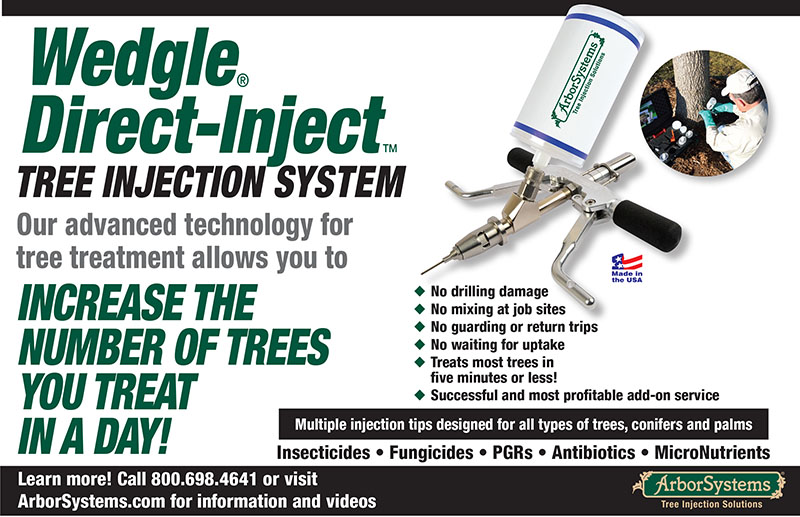
Assessing the situation
An effective IPM tree care strategy begins with a thorough site assessment, encompassing not only the tree in question but also its surrounding environment. Tree care professionals are tasked with evaluating factors such as:
- Pest infestation severity
- Tree health indicators
- Potential collateral damage to nearby vegetation or structures
“It’s a safety assessment in so many ways,” Ware said. “We’re looking for things like waterways and playsets and vegetable gardens. Where are the property lines located?”
Ware also mentioned that knowing where the property lines are is critical information to prevent chemical trespassing.
“If we’re spraying on Mrs. Jones property, we certainly don’t want to get anything on Mrs. Smith’s property next door,” he said. “It introduces a whole host of other issues that we don’t want to deal with.”
This holistic approach enables arborists to make informed decisions regarding treatment options, whether it involves targeted spraying, injections, or alternative methods. Additionally, identifying sensitive areas such as vegetable gardens or playgrounds ensures proper precautions are taken to prevent unintended harm.
Consider the weather
Weather conditions play a crucial role in the success of spraying operations and the safety of arborists and the environment. Spraying should generally be avoided during adverse weather conditions, such as rain, high winds, or extreme temperatures. Not only can these conditions compromise the efficacy of treatments, but they can also increase the risk of drift, runoff, or contamination.
“Everybody’s always concerned about spray drift, so there are a lot of tree injections going on today,” said Duffy. “And one of the biggest things that goes on on rainy days, of course, is root feeding of trees.”
By assessing your site, adhering to best practices, and monitoring weather forecasts, arborists can minimize risks and optimize outcomes during spraying operations.
PPE and spraying equipment
Investing in the right equipment is essential for ensuring the safety and efficacy of spraying operations.

Arborists should utilize calibrated sprayers, proper nozzles, and application techniques that minimize drift and maximize coverage. Conducting regular maintenance and keeping equipment clean are also paramount to prevent cross-contamination and ensure consistent performance.
Equally important is the use of personal protective equipment (PPE) to shield against exposure to chemicals and mitigate health risks for workers. Keeping PPE clean and in good condition is equally important, according to Ware.
“I’ll see lots of people that are wearing it, but it doesn’t look like it’s been cleaned in years,” he says. “So, it’s almost worse, because now you’re taking a helmet or gloves that haven’t been cleaned in a long period of time, and they just become reservoirs and concentrate all of this product that we’re trying to protect ourselves from.”
By prioritizing equipment maintenance and PPE compliance, arborists uphold standards of safety and professionalism in tree care practices.
Educating clients
Effective communication and client education are integral components of responsible spraying practices. Tree care companies are responsible for informing clients about spraying, potential risks, and necessary precautions. This includes advising clients on how to prepare for spraying sessions, such as removing pets, covering sensitive plants, or temporarily vacating the area.
“That benefits everybody, especially you as the arborist,” says Ware. “Because now, hopefully they’re able to do that ahead of time and you spend less time on property asking them to move the car and close the windows and keep the dog inside.”
Moreover, many state regulations require proper notification of neighbors or public areas to ensure transparency and community awareness.
Duffy explained that an issue tree care companies often face is that, while the client is usually in a better position logistically to notify their neighbors, they often won’t do it. However, many areas have strict laws about notifying properties that are highly sensitive to pesticides.
“It becomes a burden on the tree company sometimes to find out who the neighbors are so they can notify them,” he explained.
By fostering open dialogue and providing clear guidance, tree care professionals can empower clients to actively participate in the preservation of tree health and environmental stewardship, while making your job a bit easier in the process.
Continuing education
The field of tree care is dynamic, with new products, techniques, and regulations constantly emerging. Continuous learning and professional development are essential for arborists to stay abreast of industry trends and best practices in tree pest management.
“Arborists are dealing with hundreds of species of trees, hundreds of species of pests, so there’s always something new to learn, and there are so many products available out there to you,” Ware says. “There might be better ways to do what you’re doing to lower the risk to yourself.”
Duffy adds that in his role working to equip arborists with the right tools, keeping up your certification credits is key.
“To me, I guess the people that are certified are proud of it, and they advertise it all the time,” he explained. “If someone says to me, ‘What tree company should I call?’ I start off with someone that’s a certified arborist.”
Whether through workshops, certifications, or industry conferences, embracing lifelong learning helps an arborist enhance their expertise, deliver superior services, and contribute to the advancement of sustainable tree care practices.
The bottom line
As guardians of our urban forests, arborists play a vital role in preserving the health and vitality of trees for generations to come. That’s why responsible spraying isn’t just a task, it’s a commitment to environmental stewardship and community well-being.
By embracing principles of responsible pest management, arborists can uphold standards of excellence in tree care. Through continuous learning and adaptation, we can ensure a greener, healthier future for our planet and its inhabitants.
